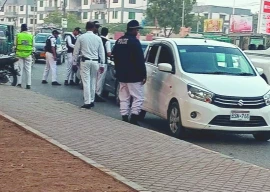
There is an approximate backlog of over 4.3 million housing units in the country, which is growing by an additional demand for 500,000 units per annum. There is an oversupply of homes available for those who can afford to pay more but a dearth of housing that is within the price reach of the urban poor. According to a 2012 survey in Lahore, 66 per cent of the urban population could afford to buy only one per cent of the available homes in the city. The situation in other major cities is no better.
Although approximately 40 per cent of Pakistan’s urban population lives in sub-standard katchi abadis, the Katchi Abadis Improvement and Regularisation Programme is also facing mammoth challenges. The government authorities concerned need to work much harder to better integrate katchi abadis, by linking them with available infrastructure, and making katchi abadi integration a priority in future urban development plans, which is not really happening.
Successive governments have launched numerous schemes in the name of the poor. Most recently, the Sindh government has approved a proposed draft for the construction of around 200,000 low-cost housing units worth Rs300 billion in the province. However, even if this scheme is effectively implemented, it will still be a drop in the ocean compared with the actual requirement. Moreover, the experience of similar schemes in the past is not encouraging. Previous low-cost housing schemes have failed to meet the demand of low-income groups because they remained unaffordable for a majority of poor households, and became encumbered by red tape and corruption. As a result, public land allocated for housing the poor is often purchased by speculators or the middle classes instead. There is need to draw lessons from prior failures to ensure that such schemes are effectively implemented.
Instead of allowing the creation of large housing schemes, by encroaching upon more agricultural land for instance, provincial governments need to promote densification in upcoming housing projects. One suggestion could be to review the existing restrictions on height of apartments, so as to encourage construction of buildings that can house at least 1,500 persons per acre. A review mechanism of experts representing urban planners, architects, engineers, and other stakeholders should be established at the provincial level to ensure that such high-rises are built safely. Our policymakers need to take decisive steps to offer the urban poor a chance to own their own homes, instead of being compelled to eke out an existence in ever-growing slums and squatter settlements.
Published in The Express Tribune, February 6th, 2015.
Like Opinion & Editorial on Facebook, follow @ETOpEd on Twitter to receive all updates on all our daily pieces.
















COMMENTS
Comments are moderated and generally will be posted if they are on-topic and not abusive.
For more information, please see our Comments FAQ